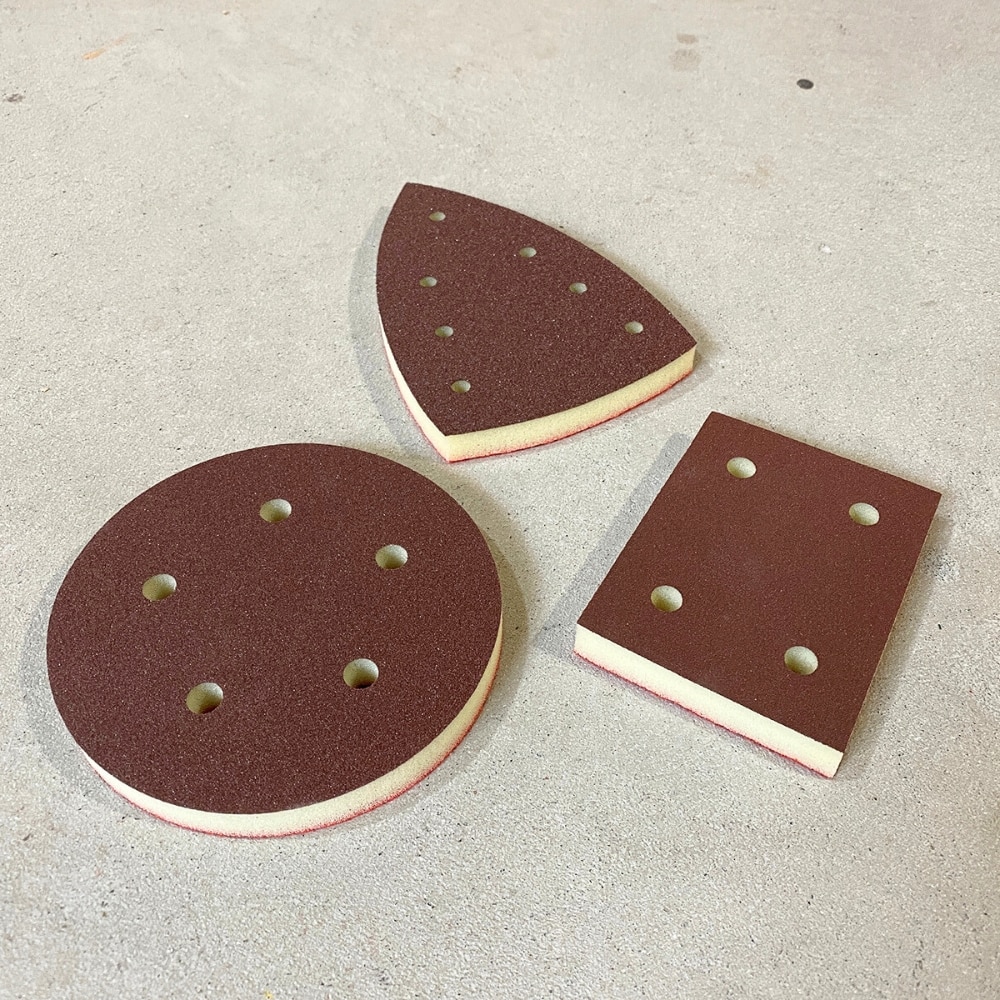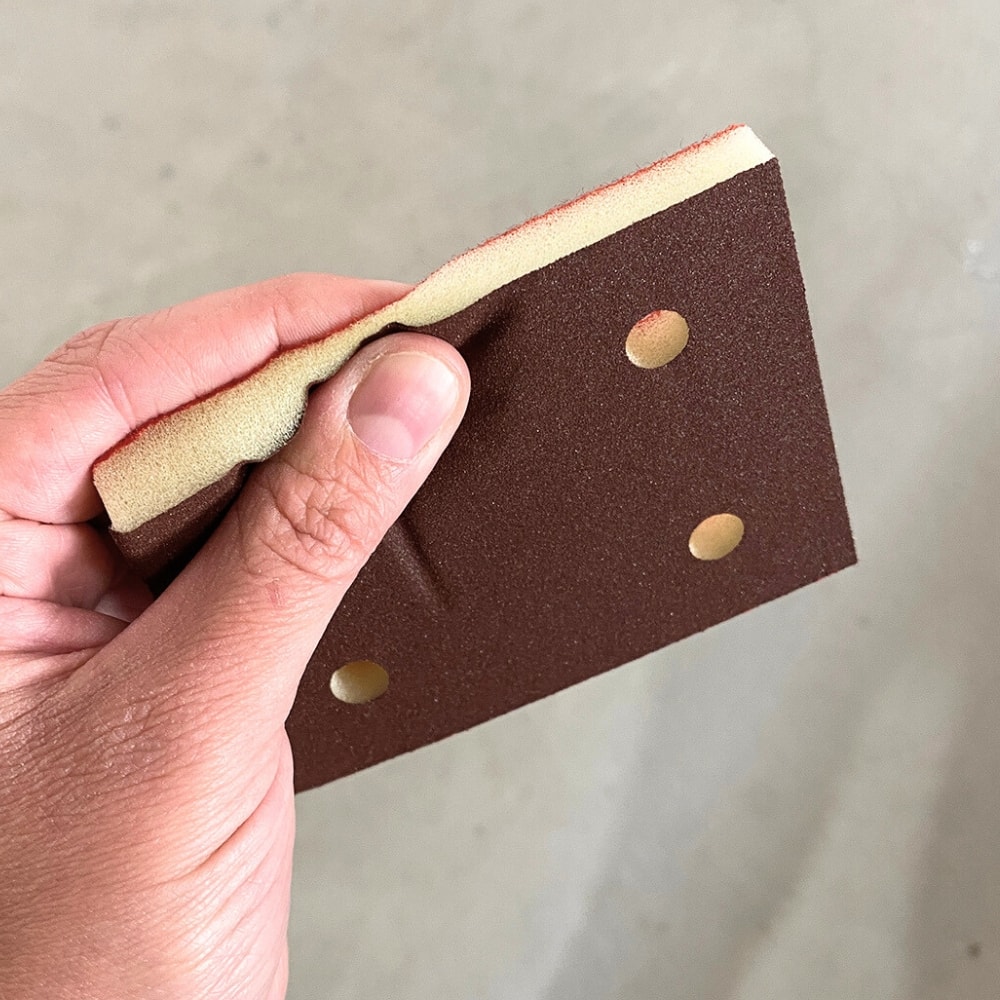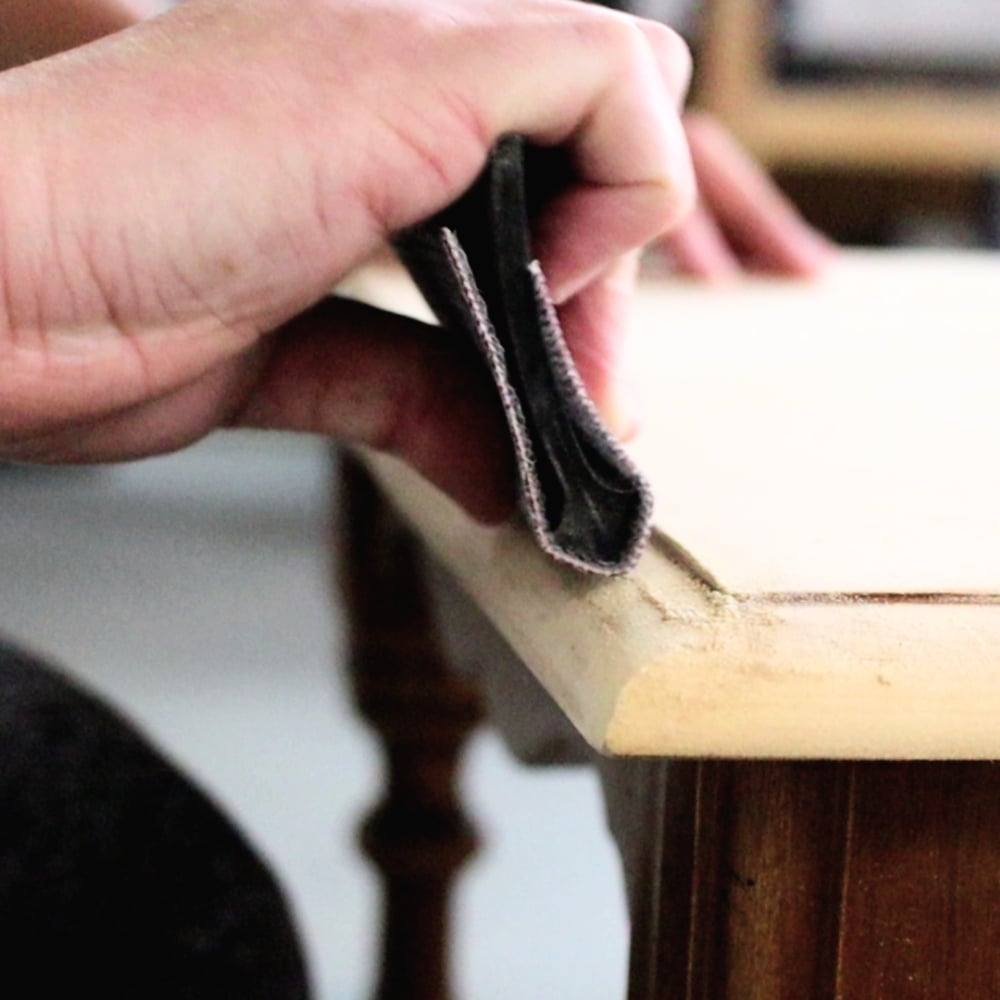How to Sand Curved Surfaces
If you’re thinking of refinishing furniture, one of the necessary steps is sanding furniture before painting. However, sanding a flat surface is not the same as sanding curved surfaces. Sanding curved surfaces can be daunting if you don’t know the tricks that make it easy!
In this blog post, we will guide you through how to sand curved surfaces with ease. With a little bit of patience and the right tools, you’ll be able to tackle any curved surface on your furniture and achieve the smooth finish you desire. So, let’s dive into the details of sanding curved surfaces!

Sanding curved surfaces can be a difficult and time-consuming task. Luckily, there are tools and techniques that can help you achieve a smooth, flawless finish.
We’ll show you how to use SurfPrep foam sanding pads and sanding contour grips for sanding curved surfaces so you get the perfect finish every time.
With these tools, you’ll be able to quickly and easily sand any curves or contours on your furniture without having to worry about uneven edges or scratches in the wood.
Plus, they’re designed specifically for this task so you know that it will look great when finished!
Why is Sanding Curved Surfaces Different?
Sanding curved surfaces can be a challenging task if you don’t have the right tools or know how.
It’s very difficult to use an orbital sander on curved surfaces because the flat sander will sand the curve unevenly. Check out the best sanders for furniture here.
Additionally, because curved surfaces are more delicate than straight ones, using too much pressure or the wrong type of sandpaper can cause irreparable damage to your furniture.
To ensure that you get a perfect finish every time, it’s important to use the right tools and techniques when sanding curved surfaces.
As an Amazon Associate, I earn from qualifying purchases. I also may earn from other qualifying purchases with other companies or get free product to review and use. All opinions are my own.
Best Tools for Sanding Curved Surfaces
SurfPrep foam sanding pads and sanding contour grips are the ultimate tools for sanding curved surfaces.
These tools are specifically designed to make sanding those tough to reach contours and curves effortless.
You can learn more about SurfPrep sanding sponges here and how it helps with sanding hard to reach and curved areas.
SurfPrep 1/2″ Foam Sanding Pads
The foam sanding pads have a flexible design, which allows you to sand even the tightest radius with ease. (Use code RAY10 to get 10% off your order at SurfPrep!)
These pads come in various sizes, making them suitable for all kinds of power sanders, including SurfPrep sander alternative, which can help you speed up your sanding process.
Learn all about SurfPrep Sandpaper here for all of your sanding needs.
Check out our blog post about foam sanding pads for electric sanders to learn more about how foam sanding pads can help you save time and money.

Here is a link to the foam sanding pads for other brand sanders that come in all the different shapes and sizes. (Use code RAY10 to get 10% off your order at SurfPrep!)
Additionally, you can also use these pads by hand, making it possible to sand even more intricate details on your furniture.
The soft foam construction of the pads allows for a smoother sanding experience, reducing the risk of gouging or uneven sanding.
With this tool, sanding any kind of detail on your furniture is easy, whether you’re working on the edges of a tabletop or a curved back of a chair.
The SurfPrep 1/2″ foam sanding pads are an excellent addition to any toolkit!! I use them on almost every furniture project!

What grits are available for the SurfPrep foam sanding pads?
The SurfPrep foam sanding pads come in a variety of grits to suit your sanding needs. These include coarse, medium, medium+, fine, very fine, super fine and super fine+.
This range allows you to choose the right grit for your particular project, whether it’s heavy sanding or a final touch-up.
Each of these has corresponding grits that are commonly used in sanding tasks.
For example, coarse grits such as 80 or 100 are great for removing old finishes or paint, while finer grits like 150 or 220 are ideal for preparing surfaces for painting or staining.
Additionally, these different grits can also be used in combination with each other for more efficient sanding.
For instance, starting with a coarse grit and gradually working your way down to finer grits will help remove deep scratches or blemishes while also leaving a smooth surface.
So be sure to have a selection of SurfPrep foam sanding pads on hand for any sanding you may encounter!
The ability to choose from different grits with the SurfPrep foam sanding pads means you can tailor your sanding experience to get the best results for your specific needs.
Are SurfPrep foam sanding pads only for curved surfaces?
No, SurfPrep foam sanding pads can be used on a variety of surfaces, including flat ones. They are designed to provide a smooth and flawless finish without leaving any swirl marks or scratches.
So whether you’re working on curved furniture or flat surfaces, these sanding pads will get the job done efficiently.
These foam sanding pads are just more versatile since you can use them on both curved and flat surfaces, making them a great addition to any sanding toolkit.
Compared to getting separate tools for different surfaces, the SurfPrep foam sanding pads offer convenience and efficiency by being able to use them on multiple types of surfaces.
This makes them a cost-effective option for both professionals and DIY-ers!
Please note: Foam sanding pads do not sand as fast as flat sandpaper on a flat surface, because of the give of the foam.
Sanding Contour Grips
The sanding contour grips are perfect for sanding around edges and in tight corners. The grips are made of durable materials that won’t damage or scratch your furniture.
You can wrap your choice of sandpaper around the different shapes of grips to allow you to reach tight crevices and corners that would otherwise be difficult to sand.
They are also shaped in different ways to help you hand sand different curvatures that you typically find on furniture.
Check out the best sandpaper for furniture that you can use with sanding contour grips here.

I used to fold my small piece of sandpaper up a couple of times to help sand these areas, but these grips save my hand and make it easier to sand these hard to sand areas.
Check out this post to learn more about how to sand in tight spaces.
With these two tools, you can achieve a smooth and flawless finish on any curved surface. They are a must-have for anyone looking to refinish furniture or tackle any intricate sanding task.
How to Sand Curved Surfaces
SurfPrep foam sanding pads and sanding contour grips are designed specifically for this purpose, allowing you to quickly sand any curves or contours on your furniture without having to worry about uneven edges or making your hand cramp.
Let’s take a look at how to use them.
Using the SurfPrep Foam Sanding Pads
These pads are ideal for sanding curves and contours. To use them, you’ll need to attach the hook and loop backing of the foam pad to the hook and loop on your power sander of choice.
These 1/2″ foam pads were first made for the 3″x4″ SurfPrep sander, which is the perfect size and shape for furniture projects. Learn more about the 3″x4″ SurfPrep sander here.
Learn the difference between SurfPrep VS Festool sanders in this review to help you choose the best one for your needs!
Once attached, you can begin sanding by lightly applying pressure while moving the sander slowly back and forth.
You can offset the pad to help you get into corners without messing up the pad of your sander as well. Be sure to move the sander slowly and evenly over the surface to avoid uneven sanding or scratches.

And it’s best to start with a higher grit pad until you get used to sanding the details, so you don’t accidentally sand too much off.
If you use a coarse sanding pad, slowly work your way up through the different grits until you get to a medium+ or fine grit sanding pad.
This will help remove excess scratches in your wood, and make it feel smooth, perfect for refinishing or painting the surface.
Using Sanding Contour Grips
The sanding contour grips are perfect for getting into tight corners or curved edges where a power sander can’t reach.
To use them, pick the grip that best matches the curves or corners that you need to sand.
Then simply wrap a small piece (about 3″x4″) of your choice of sandpaper around one of the grips and start sanding by hand. (Use code RAY10 to get 10% off your order)
Be sure to move the grip back and forth while lightly applying pressure, so you don’t scratch or gouge your furniture or accidentally sand against the wood grain.
Learn more on how to sand wood by hand here.

The different shapes of the grips make it easier to reach tight corners and intricate details on your furniture quickly and efficiently, saving you time and effort.
If you use a coarse sandpaper, slowly work your way up through the different grits until you get to a 150 or 220 grit sandpaper.
This will help remove excess scratches in your wood, and make it feel smooth, perfect for refinishing or painting the surface.
SurfPrep foam sanding pads and sanding contour grips are excellent tools to help you achieve a smooth, flawless finish on any curved surface.
With proper use of these tools, it’s easy to sand curves and contours quickly without having to worry about uneven edges or making your hand cramp.
Plus, they’ll save you time by allowing you to reach tight crevices and corners with ease. Just like the spindles and if you want an easier way to sand this part of furniture check out our detailed guide on easy way to sand spindles!
Whether you’re refinishing furniture or tackling an intricate sanding task, adding these two items into your toolkit is sure to make the job much easier!
More Sanding Furniture Resources
- Best Sanders To Remove Paint
- What You Need To Get Started with a SurfPrep Sander
- Furniture Refinishing Tools
- Festool Rotex 125 Review
- Best Orbital Sanders
Follow us on YouTube to get more tips for painting furniture.
Or share your project with us on our Facebook Group and be part of our community. See you there!
